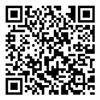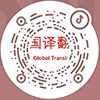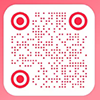Specific Solutions
Patent Translation into English: Precision in Language, Law, and Technology
— By Airui Translation
When filing patents internationally, translating your documentation into English is more than a linguistic task — it’s a matter of legal enforceability, technical clarity, and global recognition.
Whether for PCT filings, national phase entry, or patent licensing, a professionally translated patent must meet the linguistic standards of patent examiners, the technical expectations of engineers, and the legal logic of IP attorneys.
Here’s how Airui Translation approaches English patent translation — and why it matters.
I. What Documents Typically Require Translation into English?
We translate a full range of patent-related documents, including:
Specifications
Claims
Abstracts
Drawings and figure descriptions
Office Action responses
Amendment requests / priority documents / assignment records
PCT applications / national phase entry submissions
These are used for:
PCT international filing
Entry into the US, Europe, Japan, and other jurisdictions
Patent licensing or transfer to overseas companies
Participation in global exhibitions, technical due diligence, or litigation
II. Four Key Challenges in English Patent Translation
1. Terminology Accuracy and Consistency
Each domain — mechanical, biotech, electrical, pharmaceutical, software — requires domain-specific language.
Terms must conform to USPTO, EPO, WIPO usage standards
Terminology must remain consistent across claims, spec, and drawings
Avoid “Chinglish” or literal expressions — use terms patent examiners expect
Example:
“固定连接” → fixed connection (not “connect firmly”)
“驱动装置” → driving mechanism (not “power unit”)
2. Legal-Specific Claim Language
Claim translation requires:
Clear dependency structures (independent and dependent claims)
Correct use of legal connectors: comprising, configured to, wherein, etc.
Avoiding vague terms: about, substantially, generally, etc.
One sentence per claim — grammatically and legally sound
One mistake in claim translation can result in invalid scope or rejection.
3. Jurisdictional Differences in Style
Each patent office prefers slightly different writing styles:
| Jurisdiction | Preferred Style |
|---|---|
| USPTO (US) | Innovation-oriented, direct, emphasis on enablement |
| EPO (EU) | Formal, passive voice, strict consistency |
| JPO (Japan) | Tight logic, minimized modifiers, clear structure |
| WIPO (PCT) | Neutral tone, globally accepted expressions |
A good translator adjusts the tone and format accordingly.
4. Translation as Legal Interpretation
Patent translation is not just about technical correctness — it affects:
Patentability and grant decision
Scope of protection in enforcement
Clarity in legal disputes
Accuracy in official communications and amendments
It is, ultimately, a legal act, not a language service.
III. Airui Translation’s Approach to Patent English Translation
✅ Technically Trained Translators + Legal Editors
Our teams combine STEM backgrounds (engineering, chemistry, biotech, etc.) with language fluency and IP knowledge.
✅ Multi-Step Review Process
We implement:
Technical translation → Legal editing → Formatting and QA
✅ Terminology Management
We build and maintain client-specific termbases, ensuring consistent use across multiple patents or multi-language filings.
✅ Collaboration with Patent Agents & Attorneys
We support responses to office actions, post-editing of drafts, and accept annotated feedback from IP counsel for revision.
IV. Language Support and Industry Expertise
We provide:
Language Pairs: CN→EN, EN→CN, CN→JP, CN→DE, etc.
Industries: Mechanical engineering, automation, semiconductors, materials science, medical devices, AI, blockchain, chemical synthesis
File Types: Word, PDF, Excel, bilingual markup, editable source
Output: Clean English version + bilingual draft + terminology sheet (if requested)
V. Final Thoughts
Patent translation into English is not just writing foreign-language text — it’s constructing a legal document with international effect.
Your translated patent must:
Be technically accurate
Be legally valid
Be linguistically compliant with patent office standards
Be ready for global prosecution, protection, and publication
If you’re preparing a patent application or entering a national phase, Airui Translation is here to help.
We offer:
Free assessment of your claims and spec
Draft structure and terminology suggestions
Certified translation with stamp and hard copy (if needed)
Full coordination with your agent or law firm
✅ Translating clearly is the baseline
✅ Translating for approval is the goal
✅ Translating for enforceability — that’s where the real value lies.
— Airui Translation / Patent Language Services Team


















